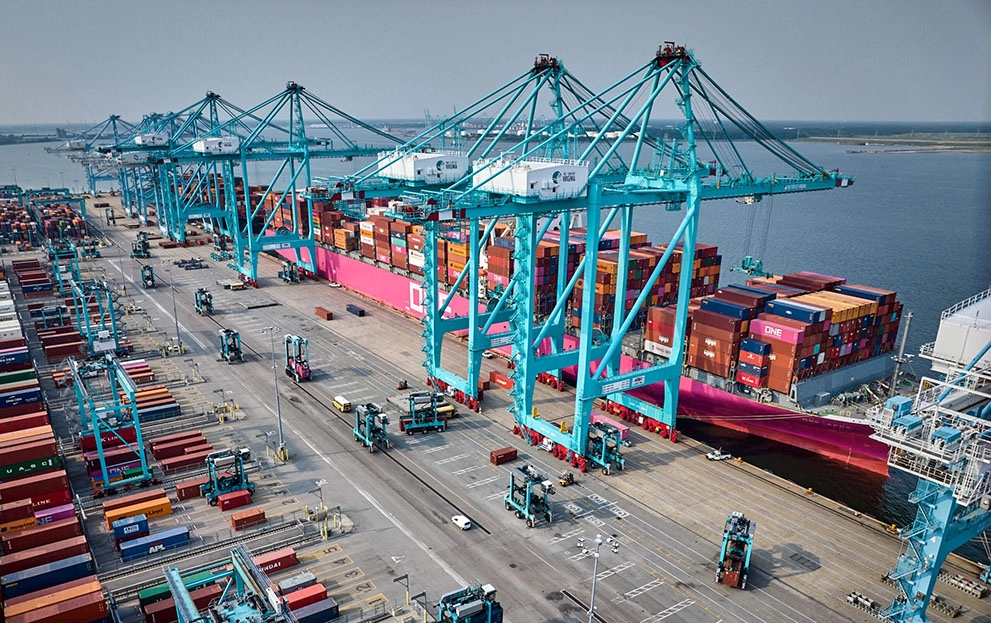This article originally appeared on Cargomatic.com.
Stephen Edwards, CEO and executive director of Virginia PortAuthority (VPA), strongly believes that new trade routes are opening for his facility through the Suez Canal.
Edwards’ comments were made during a conversation with Cargomatic’s chief spokesman and vice president of industry relations Weston LaBar at the recent International Trade Symposium hosted by the Virginia Maritime Association on October 4-6 in Norfolk, Virginia.
Over the past year or so, the Port of Virginia has benefited from the diversion of cargo away from the West Coast as shippers feared possible port closures along the Pacific Ocean during nearly 15 months of uncertain labor negotiations.
Edwards is confident that some diverted cargo streams will remain in the Virginia port, while others will not.
It’s not normal for fruits and nuts from Northern California to come through this port, right? But they were, and they were exported through our port to reach their destination in Asia because that was actually how the routing worked. This will not continue.
In contrast, he said, some of the business that has moved to the East Coast is the result of what he called lasting decisions.
Distribution centers are being built. Transhipment capacity is being built and it is natural for it to stay here as the better route is to get here via Suez and then continue on.
While labor negotiations on the U.S. West Coast may have driven the recent shift of cargo to East Coast ports, Edwards believes this is actually a much longer-term trend.
I think material change is something that has been going on for over a decade. And that will continue for a number of reasons that have to do with port capacity, gateways, but also geopolitical issues, and also just where trade is moving.
Most importantly, he notes that just as the West Coast has been a beneficiary of the shift to Chinese manufacturing, the East Coast will be a beneficiary of this shift to Southeast Asian and South Asian manufacturing.
Edwards is keenly aware of the changing trade routes emerging from the Indian subcontinent towards the port of Virginia, noting that as a port we currently serve five direct routes from northwest India.
That’s a huge change, he said, saying that if we turned the clock back 10 years, this would be one [service]. It was 500% similar from where we were.
He notes that ships transiting the new trade routes through the Suez Canal are also larger than they used to be, meaning the port must make efforts to maintain growing trade.
Our job as a port is to make sure we can handle larger ships, ships ranging from 13,000 to 14,000 TEU. To achieve efficiency of the Suez route, shipping lines must be allowed to use their best resources. And their biggest advantage will be bigger ships, he said.
So to take advantage of the cost advantage slots can provide, we need to build more capacity, he said. All this is to say that we can handle your very large container ship to give you the economies of scale you need to sail through the Suez Canal.
Watch Stephen Edwards and Weston LaBar’s conversation here.
#Port #Virginia #east #Suez #increase #market #share #MarketScale
Image Source : marketscale.com

